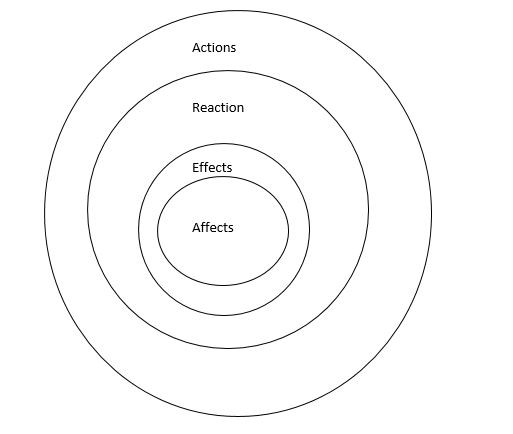Start learning 50% faster. Sign in now
All reactions are actions (A) ŌćÆ conversion = Some actions are reactions (I) ŌćÆ possible concl. ŌćÆAll actions may be reactions (A). Hence, I follows. Here, all the given statements are positive statements and conclusion II is a negative conclusion. As we know that no negative define conclusion can be drawn from the positive statement, we can say that conclusion II will not follow. All affects are effects.(A) + All effects are reactions.(A) = All affects are reactions.(A) ŌćÆ conversion ŌćÆ Some reactions are affects.(I), Hence, conclusion III does not follow. Alternate method: Minimal possibilities: 
Which is the first state to adopt water budget to deal with water problem in summer ?
ŌĆ£ImperfectŌĆØ is the autobiography of┬Ā
NITI (National Institution for Transforming India) Aayog and the ______ are working together to facilitate a program for faster and easier financing of...
Recently, the community in Enga province experienced significant devastation as a result of a collapse at Mount Mungalo. In which country is Mount Munga...
What is the focus of the book "Caste as Social Capital: The Complex Place of Caste in Indian Society" by Ramachandran Vaidyanathan?
What is the cost-sharing ratio between the Centre and states for implementing PMAY-G in plain areas?
ICICI Prudential Life Insurance has announced the launch its digital-first campaign featuring which of the following Indian Cricketer?
SEBI has introduced the issue summary document for filing papers pertaining to IPO and for further issue of securities in XBRL format which ┬Ā will be d...
Which state is known for the folk dance 'Dhamyal'?
The IMFŌĆÖs World Economic Outlook (WEO) in October 2024 projected IndiaŌĆÖs growth rate for FY 2025-26 at what percentage?